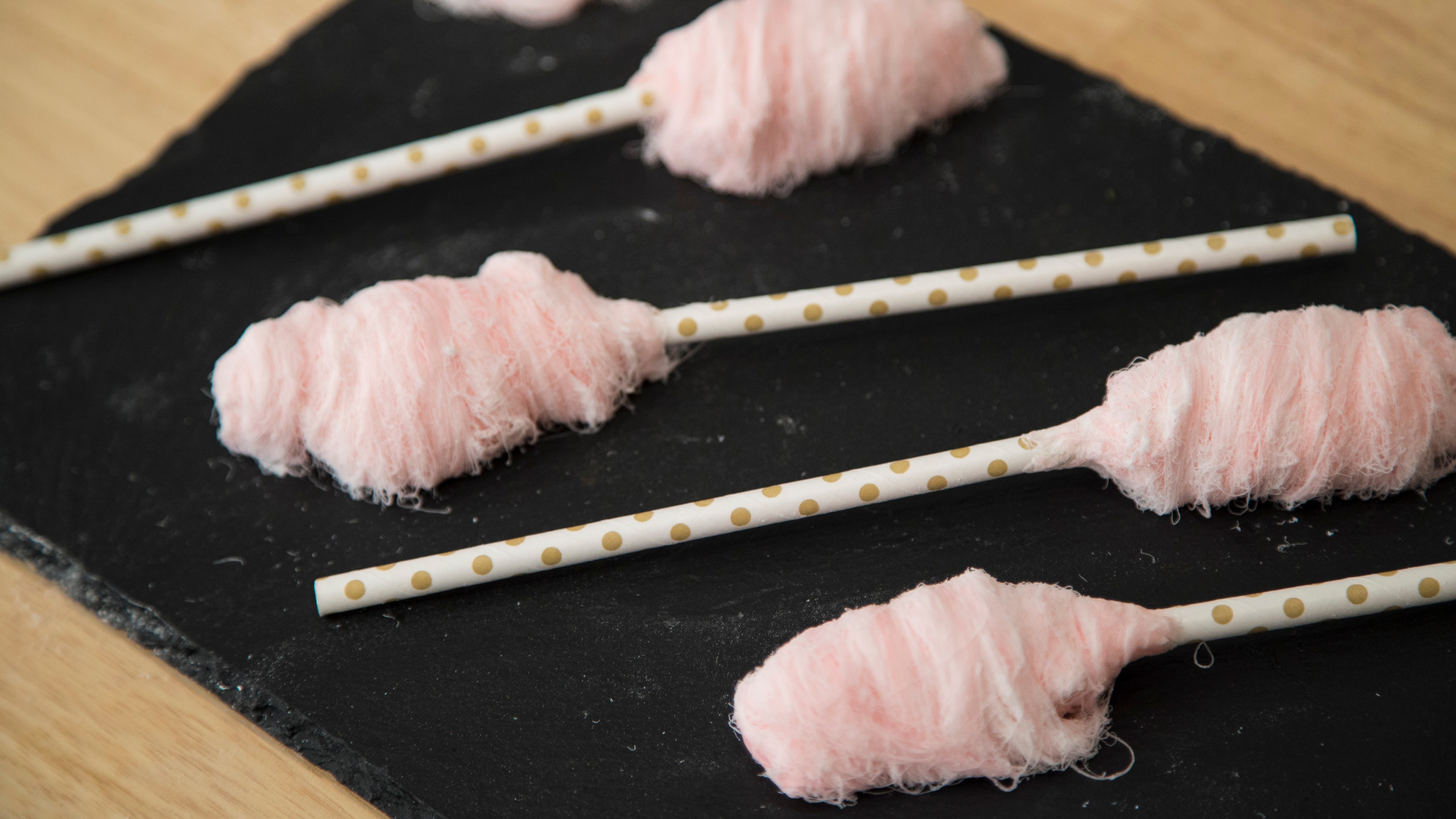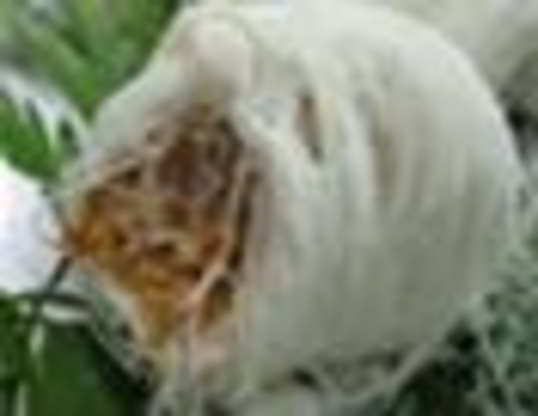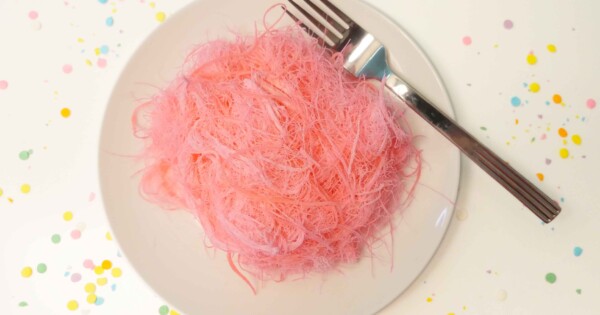Dragon's beard candy
long xu su, mian hua tang, 龙须酥, 棉花糖, 龙须糖, 龍鬚糖, 銀絲糖, 银丝糖
Dragon's beard candy or Chinese cotton candy or Longxusu (simplified Chinese: 龙须酥; traditional Chinese: 龍鬚酥; pinyin: lóng xū sū) is a handmade traditional art of China. It is a traditional Chinese confectionary similar to floss halva or Western cotton candy, which can be found in many Chinese communities. Dragon's beard candy was initially created in China, but soon spread in popularity in other parts of East Asia and South East Asia, becoming a regional delicacy in South Korea in the 1990s, and Singapore in the 1980s, as well as more recently in Canada, and the United States. It has a low sugar content (19%) and low saturated fat content (2%). By comparison, cotton candy is fat free with a very high sugar content (94%). Dragon's beard candy has a very short shelf life. It is highly sensitive to moisture and tends to melt when exposed to higher temperatures, notably during warm weather. According to legend, Dragon's Beard Candy was invented during the Chinese Han dynasty by an imperial court chef who entertained the emperor one day by performing the complicated steps in making a new confection, which involved stretching a dough-like mixture composed from rice flour into small, thin strands. These strands reminded the emperor of a dragon's beard, and were sticky enough to adhere to one's face easily, so the concoction was named Dragon's Beard Candy. The name may also be attributed to the status of the mythical dragon as a symbol of the Chinese emperor, so presenting the confection as Dragon's Beard Candy was deemed acceptable due to the social nature of the candy. It was reserved only for the ruling class due to the complexity of the preparation process.
Source: Wikipedia
Recipes



